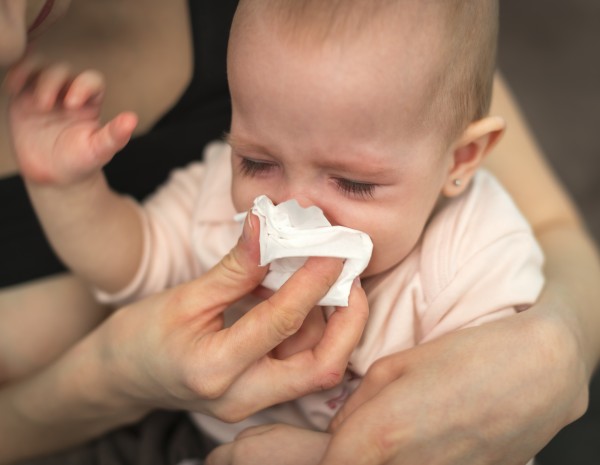The common cold and the flu – or influenza – are very similar illnesses in they’re both respiratory, caused by viruses, and share many of the same symptoms.
However, the flu is a much more serious illness, particularly in younger children, so it’s crucial to learn how to tell the difference.
Of course, due to their similarities, it’s not always easy to make the distinction, but there are some tell-tale markers to look out for:
Flu is usually more severe
Flu symptoms are generally much more severe than those of the common cold. Keep a close eye on your child and check the severity of their symptoms. If it’s more than a stuffy head and nose and a general feeling of being unwell, it’s likely it’s the flu.

Children with flu usually have a fever
It’s much more likely a child with flu will develop a high temperature or fever, so check your little one’s temperature regularly with a digital thermometer. And remember, always seek medical advice if your baby is under three months and their temperature is higher than 37.5°C or if they are between three and six months and it's higher than 39°C (102.2°F) or if they are over six months and it's 40°C (104°F) or above.
Symptoms overlap, but are also different
Common symptoms with the flu are shaking chills, muscle aches, fever, dry hacking cough, and in children particularly, nausea and vomiting. Children with a cold shouldn't have these symptoms, but they may have a milder version of symptoms shared with the flu, like a runny or stuffy nose, tiredness, cough and sore throat.

Flu comes on quicker than a cold
A cold usually comes on gradually over a few days and is milder than the flu, while the flu tends to come along with a whomp all of a sudden, and is generally much more severe.
Colds tend not the affect the whole body
The flu is more likely to make the whole body feel lousy – with aches and pains, high temperature, chills and fatigue. With colds, the symptoms tend to be more localised, mainly around the head, nose and throat.

Flu can develop into a more serious condition
With little ones especially, there’s the risk flu can develop into a more serious condition, like a sinus infection or pneumonia. Keep a close eye on how your child is feeling, particularly if they become unwell all of a sudden, and if they develop a fever or shortness of breath, or if they are steadily getting worse, seek medical advice right away.
However, you may not be able to tell the difference
In some cases, you simply may not be able to tell the difference – for example, your child may have a particularly harsh cold or a milder flu – so if you’ve carefully assessed your child and are still unsure, the best course of action is to always to err on the side of caution and visit your doctor.








